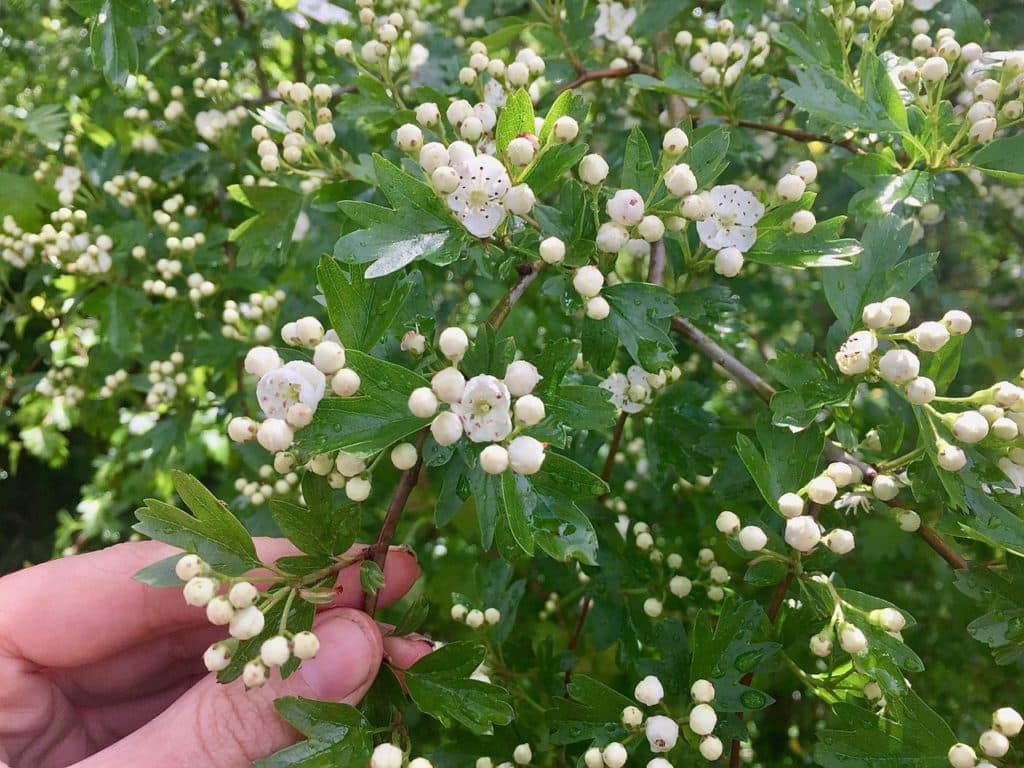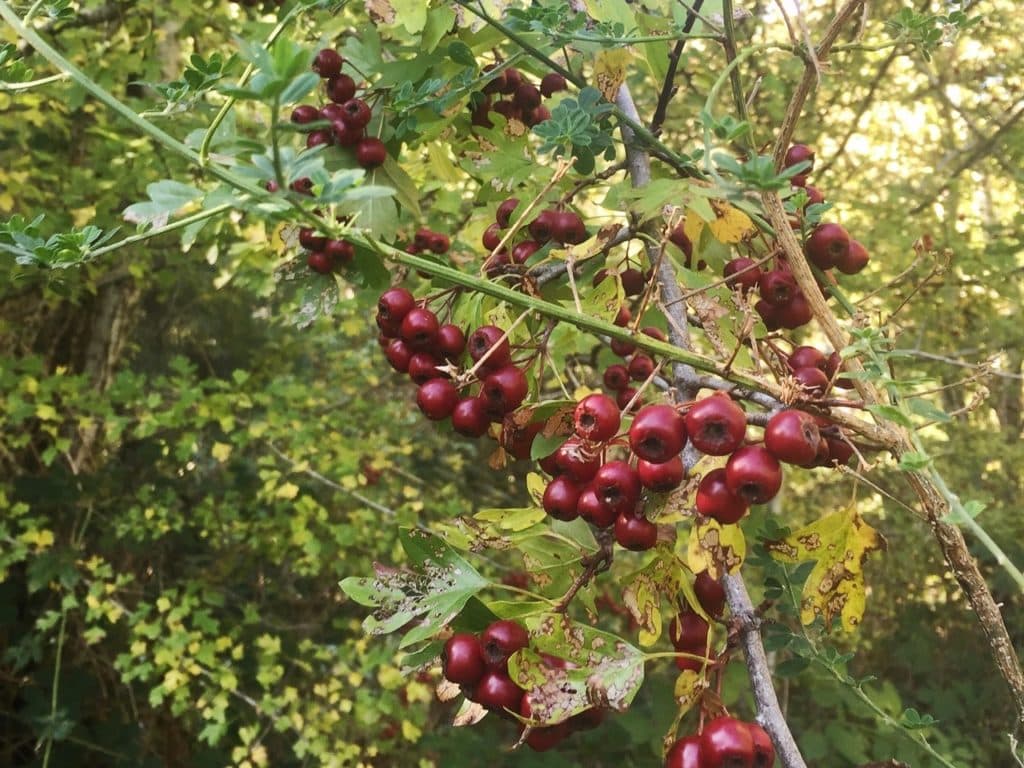Hawthorn: Foraging and Using – for heart and immunity care
Author: Kirsten Bradley
Go to Source
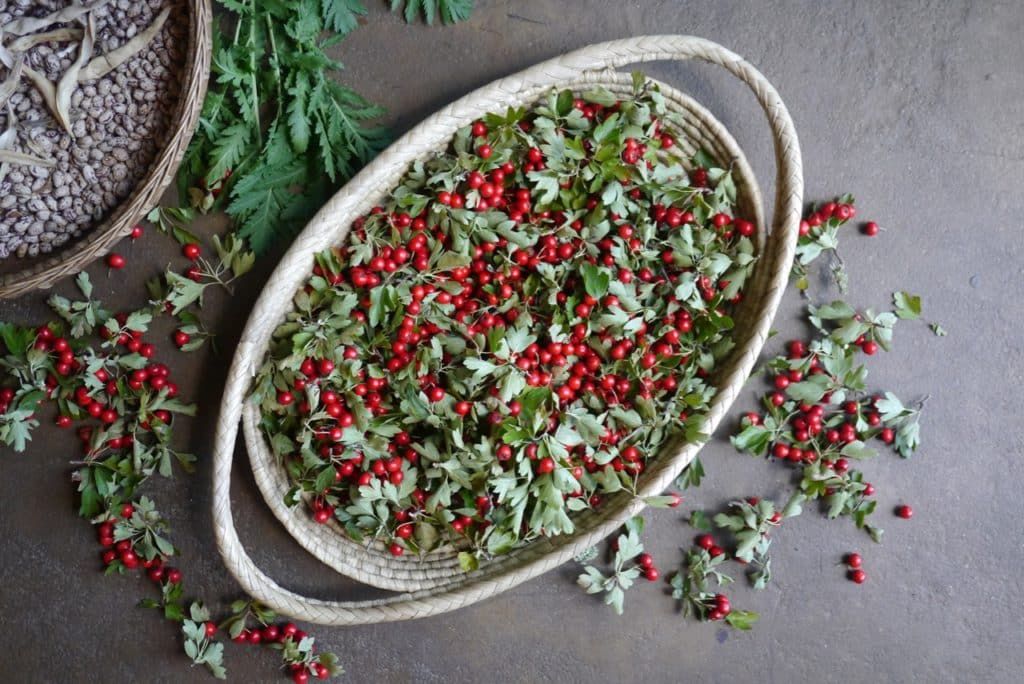
All hail hawthorn! The medicine is all around us. Here’s how to forage and use Hawthorn for heart and immunity care – such an excellent wild plant friend for us all.
Hawthorn supports the heart (it’s used to treat heart disease, angina and high blood pressure), and is also used for anxiety and urinary tract health.
It’s ‘haws’ (the red berries) are also powerful antioxidants and can be eaten raw, or as a tea or tincture – a great immunity booster for so many of us to use right now!
We’ve got a hawthorn fruit leather recipe for you below, too.
Where we live down south, the hawthorns are ripening by shore, along the laneways, and in the bits of bush not quite forest, nor quite field… The inbetween spaces – those wild and unruly patches of ground, where so much of our goodness comes from, especially at times like this.
And if you live up on the northern half of this fine planet, hawthorn will be putting out it’s first leaves and flowers very soon – they’re not called the mayflower for nothing!
The young leaves and flowers of hawthorn are also valuable medicine, so get ready to make the most of them.
Hawthorn history
Hawthorn is the name commonly applied to the plants in the Crataegus genus, which are indigenous to many parts of the northern hemisphere and also to central America.
Crataegus monogyna is perhaps the most commonly used for food and medicine in Europe, and Australia, where it grows wild. There’s south american, asian and middle-eastern Crataegus species that are used for food and medicine too.
Hawthorn has a long history of being a beloved plant in its native countries – this is old, old medicine.
In the British isles, Hawthorn is also called whitethorn. It’s where the faeries live, and in some places, a mature hawthorn shrub is not to be trifled with, just incase you anger the little people.
If you live somewhere that hawthorn also inhabits, you are fortunate to live alongside such a powerful plant ally.
Its young leaves and flower buds, as well as its bright red berries, have been important food and also medicine, especially for lowering blood pressure. Hawthorn wood is very hard and valued for tool handles, and it provides an excellent rootstock to graft some other pome fruit onto, particularly medlars and pears.
In southern Australia, hawthorn is considered a weed, however it still retains all its useful properties – as well as being an important habitat for native fauna, especially small birds and ringtail possums, who build their nests and dreys in its sheltering thorns.
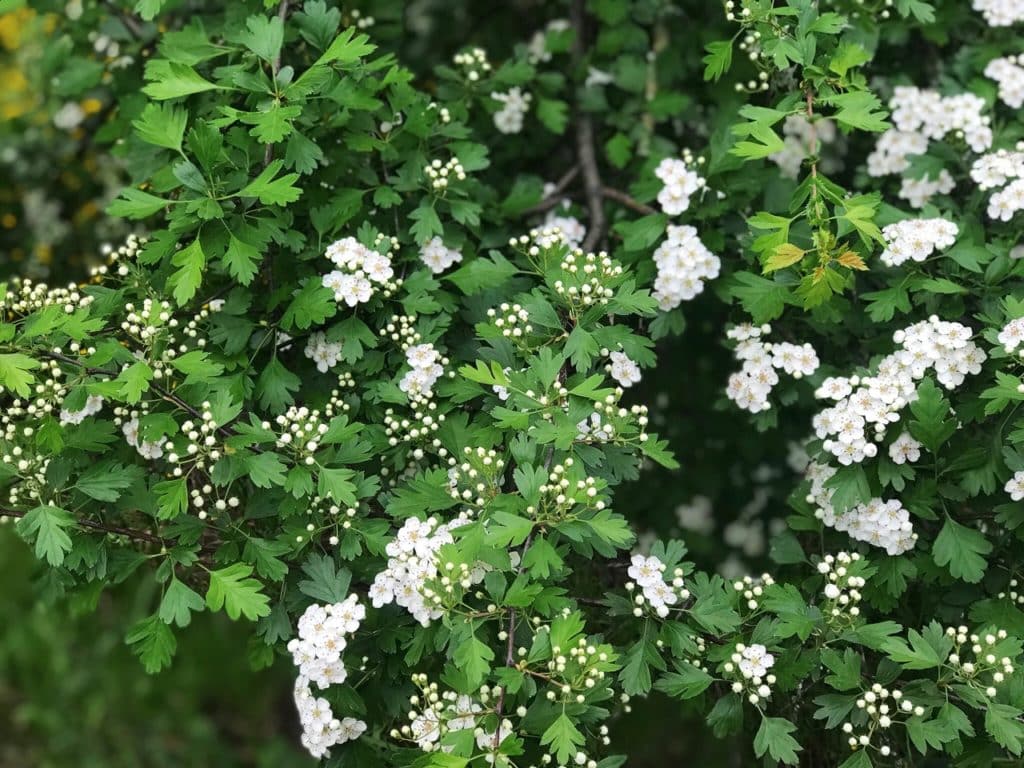
Identifying Hawthorn in the Spring
Firstly, Hawthorn is a bushy, shrubby, dense and prickly plant – it CAN grow quite big, especially if it is out by itself in a field, becoming quite tree-like.
But more often you’ll find it in hedges and understory places – in the wild in-between places of your local ‘hood.
Look for the lobed leaves that are smooth and a little shiny, and the 5-petaled flower – notice that this flower looks a lot like an apple flower? That’s because both Hawthorn and Apple are both pome fruit (alongside medlars, pears and others).
The flower is usually white, though there are some other amazing colour variations, including pink with a white center.
Also, look for the spikes! Hawthorns have spines coming out of their branches – this makes harvesting a little tricky at times, but still very worth it. Consider sturdy leather gloves if needed.
Where we live, a common lookalike to Hawthorn is Cononeaster – the flowers look very similar BUT Cotoneaster has very different leaves.
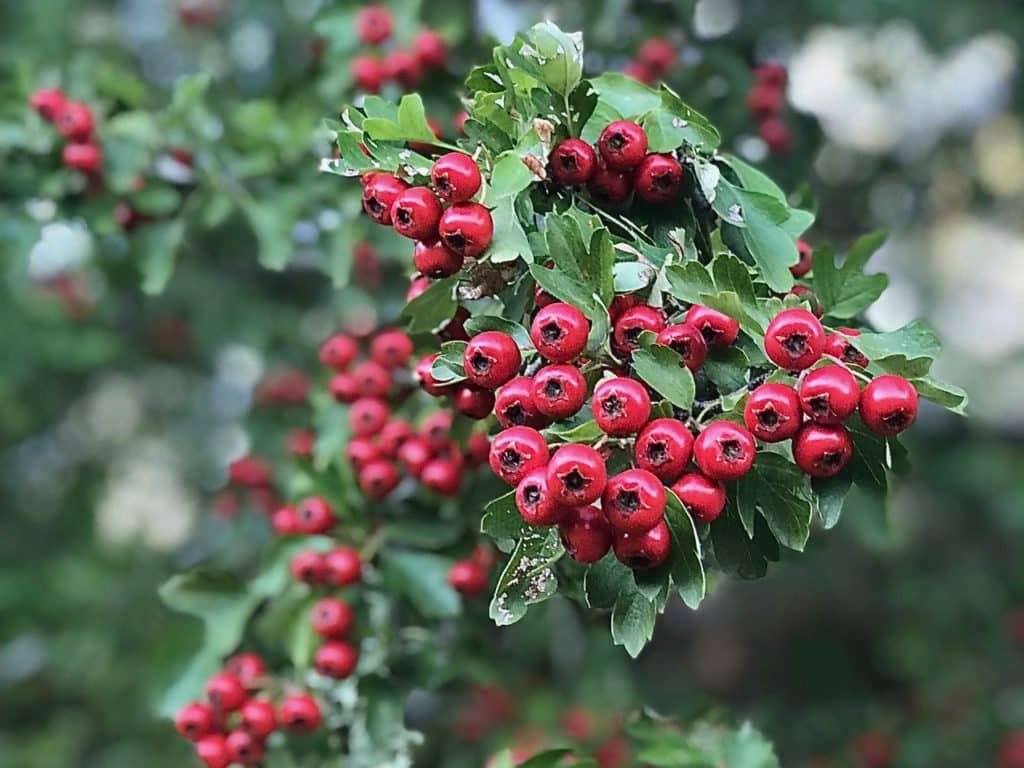
Identifying Hawthorn in the Autumn
In Autumn, look for the bright red ‘haws’ of hawthorn, and those lobed leaves.
The Haws turn bright red when ripe, and become a little squishy. They’re commonly up to 1cm in diameter, and grow in clusters.
When harvesting the red haws you will probably want some gloves – preferably leather ones. Using gloves (or your hands, if you’re hard-core) you can easily ‘strip’ a hawthorn branch into a bucket, collecting the leaves and the berries at once.
The leaves are best gathered in spring, but at a pinch, Autumn leaves will do.
Again – where we live, a common lookalike to Hawthorn is Cotoneaster – however, Cotoneaster as very different leaves – so make sure you’re familiar with the difference! Cotoneaster berries are not considered edible.
As with any wild food, always double-check while you’re still learning the shape of the leaf, flower and fruit – to ensure what you are picking is hawthorn.
That said, allow yourself to learn this plant. Once you can confidently identify it, you have this knowledge for life. Don’t let a fear of the wild stop you!
If you’re feeling unsure about foraging in general, we have an exercise and a beginner’s foraging guide for you here:
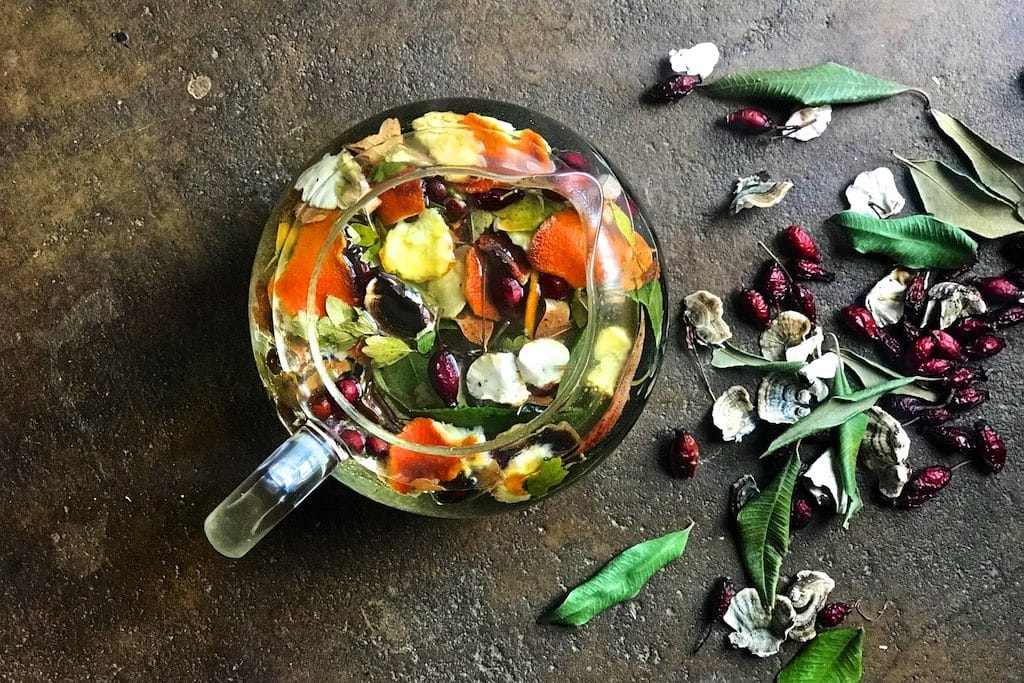
Hawthorn as food & Medicine
Hawthorn has been used extensively for both food and medicine over the centruiers.
The new leaves and flowers are known as ‘bread and cheese’ in Europe for a reason… that’s because they’ve been a crisis food – a source of nutrients during the lean period before spring crops get going, and the winder stores are nearly gone.
The red haws are both medicine and also just a great kitchen friend for pectin, teas and a pocket vitamin C boost.
Flowers and new leaves
Gather the flowers and new leaves in the spring, and dry them out of the sun – here’s a drying guide for that – then store in an airtight container, out of the light. Use the leaves and flowers in tea as a heart tonic and to help calm the nerves.
Using the red Haws
Hawthorn’s ripe red berries are hugely abundant in autumn, and they’re worth seeking out. The raw berries taste a bit like apple and are very high in vitamin C.
The ripe berries are also very high in pectin, especially earlier in the season, which makes them perfect to use in wild apple or plum jam. They can also be squashed, sieved and combined with other fruit flavours to make delicious fruit leathers, the recipe for which is below.
The haws themselves can be eaten just as they are, but they’re more of a novelty than a taste sensation. There are so many things you can do with hawthorn, though – from syrups to tinctures to jellies and more. Lots of resource below.
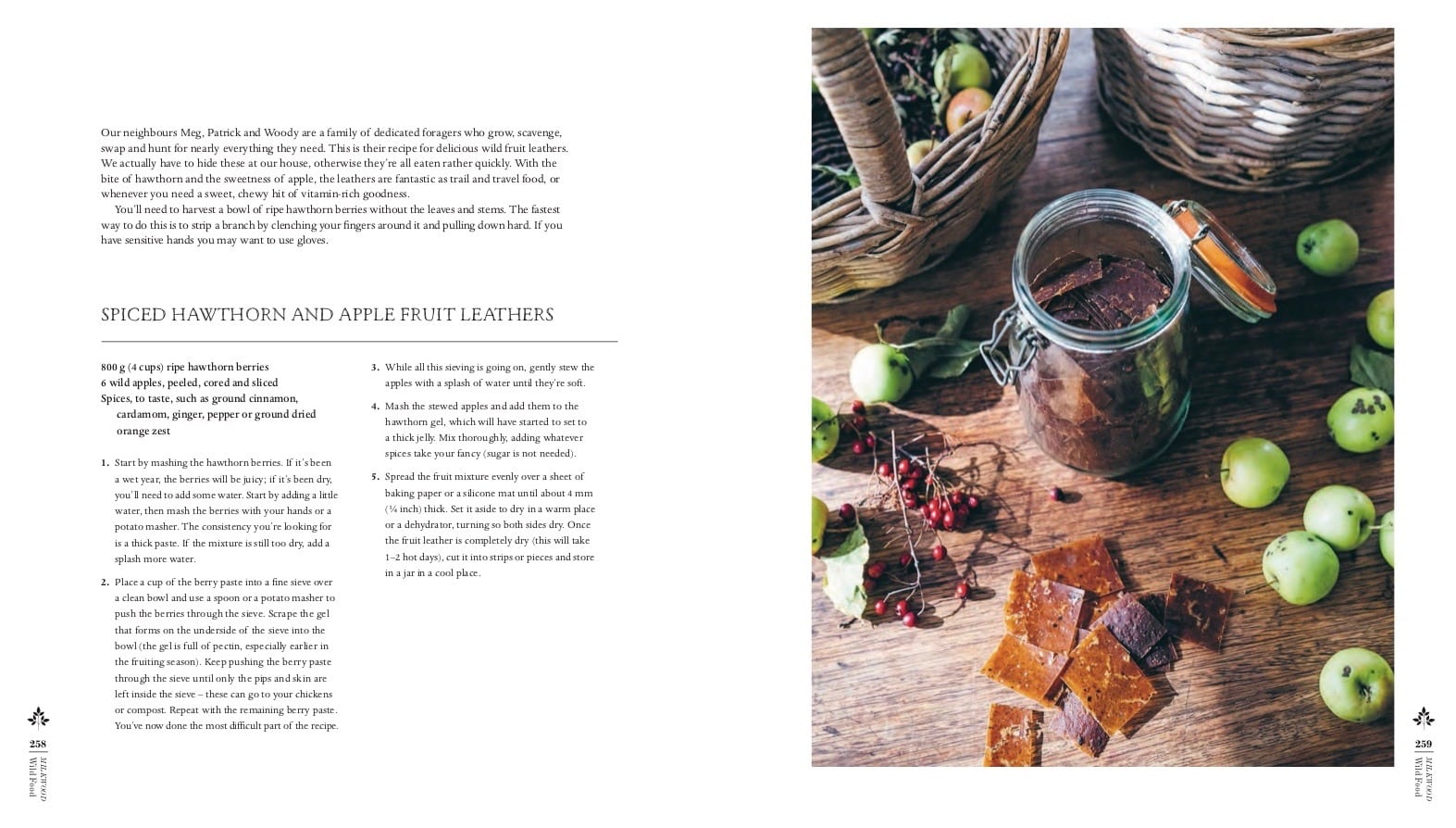
Spiced Hawthorn & Apple Fruit Leathers
Got lots of Hawthorn? Here’s a recipe from our book Milkwood, from the Wild Food chapter.
It comes from friends who kindly shared one of their fave snacks with us, to share with you… click the image above for a larger version!
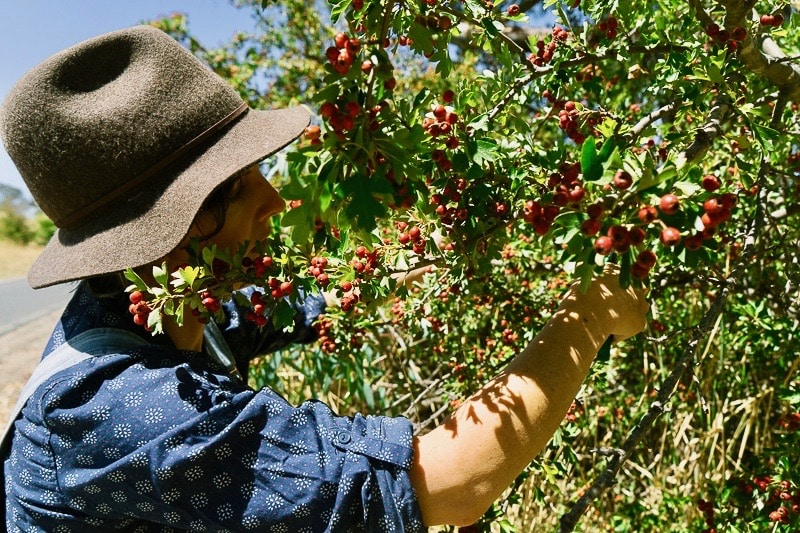
Once again, if you do nothing else with hawthorn this Autumn, just gather some haws and healthy leaves (pick out the sticks and stems) and dry them in an open basket, or in a bowl, out of the sun.
Then, once your haws and leaves are dry, put them in an airtight container out of the light – and use these for teas and tinctures as you have time to make them.
A note that this article is, in part, an extract from our book MILKWOOD – from the Wild Food chapter, specifically. Yes you can buy a signed copy from us (thank you) if you live in Australia, and we will post it out to you!
Overseas folks, check with your local bookstore or go here to grab a copy from online retailers.
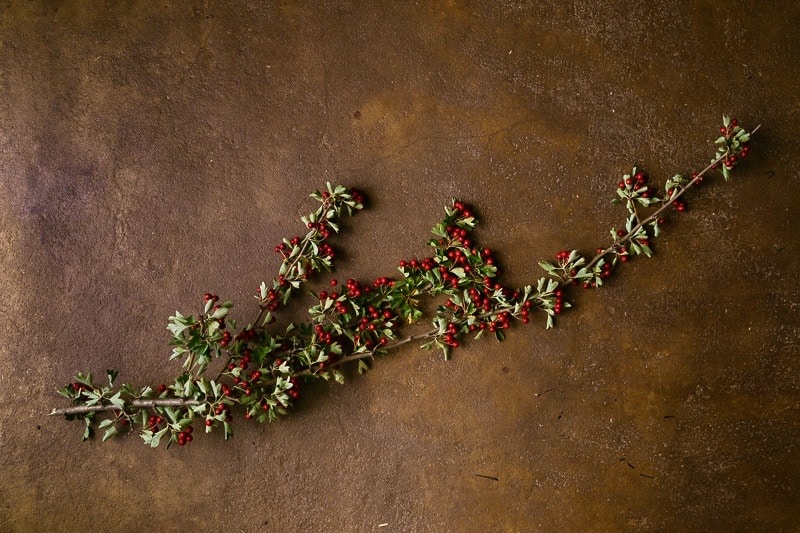
Hawthorn resources
- Great background article on Hawthorn history & uses
- Hawthorn cordial recipe
- Hawthorn tincture & Hawthorn Syrup recipe
- Hawthorn Ketchup recipe
- Spiced Hawthorn Pear Persimmon Brandy recipe
- How to make a basic Hawthorn berry/haw tincture – video
- All our resources on Wild Food & Foraging
This article is part of our Permaculture Living 2020 series – one everyday climate action for you each week. Now, during this pandemic, these ideas for self reliance, cultivating community and creating a liveable world for all, are even more important. Make sure you’re subscribed to our newsletter so you get more good ideas, tips and tricks for free each and every week.
Disclaimer: the information we provide is intended for educational purposes only. It is not meant to cover all possible precautions, drug interactions, circumstances or adverse effects. Please consult your health practitioner for further information + advice regarding treatment of any ailment.
The post Hawthorn: Foraging and Using – for heart and immunity care appeared first on Milkwood: permaculture courses, skills + stories.

